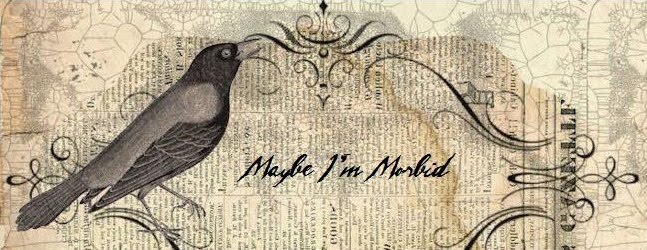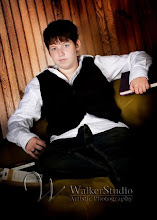 program. I then measured my height, shoe size, and shoulder span, and added 8, 2, and 6 inches, respectively, to those numbers. A bit of geometry and calculation was required to get the dimensions correct, but the mathematical work took only an hour or so. I made a list of the supplies I needed from Lowe's - writing down model and item numbers from the website proved greatly beneficial - and went with my mother's ex-husband to purchase the items. We ended up buying an 8x4 sheet of 3/4" sanded plywood for the base and a sheet of sheathing with the same dimensions for the lid and bottom. The wood was cut in-store, so it was much easier to load into the truck and carry once we got it home. As a side note, the look on the worker's face when I told him I was building a coffin was priceless. I wish I would have captured it on film. From the plywood, he cut me 2 16x14 pieces for the top and bottom, 2 68x14 pieces for the sides, 4 3x12 pieces for the corners. The sheathing was cut into a 74x22 inch piece, which left me with enough wood to fit the bottom in and cut it out later. Everything else I bought was hardware and decoration. It ended up coming to about $70 for the wood, 2 packages of 1 1/4" wood screws, a set of hinges with extra screws in the package, wood glue, stain, and a brush.
program. I then measured my height, shoe size, and shoulder span, and added 8, 2, and 6 inches, respectively, to those numbers. A bit of geometry and calculation was required to get the dimensions correct, but the mathematical work took only an hour or so. I made a list of the supplies I needed from Lowe's - writing down model and item numbers from the website proved greatly beneficial - and went with my mother's ex-husband to purchase the items. We ended up buying an 8x4 sheet of 3/4" sanded plywood for the base and a sheet of sheathing with the same dimensions for the lid and bottom. The wood was cut in-store, so it was much easier to load into the truck and carry once we got it home. As a side note, the look on the worker's face when I told him I was building a coffin was priceless. I wish I would have captured it on film. From the plywood, he cut me 2 16x14 pieces for the top and bottom, 2 68x14 pieces for the sides, 4 3x12 pieces for the corners. The sheathing was cut into a 74x22 inch piece, which left me with enough wood to fit the bottom in and cut it out later. Everything else I bought was hardware and decoration. It ended up coming to about $70 for the wood, 2 packages of 1 1/4" wood screws, a set of hinges with extra screws in the package, wood glue, stain, and a brush.Once everything was ready, Mom's boyfriend and I went to work. He used the electric saw to take off the edges of the top piece at a 45 degree angle on both sides so the corners could be screwed in. We drilled two holes into one side of each corner and the top piece, then glued the wood together and drove the screws in. It managed to hold pretty well. He went ahead and cut the other end and the sides, too. However, it became apparent that we would need longer screws for the other end because he didn't drill in the same spot.
 He bought the screws, and we repeated the process for the other end of the coffin. Attaching the sides proved much more difficult, since we had to hold the boards at the proper angle for each screw or risk the base tilting on us. We used the same method of drilling, gluing, and screwing the pieces together to form a box. I used a tape measure and some rough calculations to determine that we'd built it straight.
He bought the screws, and we repeated the process for the other end of the coffin. Attaching the sides proved much more difficult, since we had to hold the boards at the proper angle for each screw or risk the base tilting on us. We used the same method of drilling, gluing, and screwing the pieces together to form a box. I used a tape measure and some rough calculations to determine that we'd built it straight.We had difficulty making the bottom fit. We cut along the length so it would match up, but I didn't account for the difference in length when we measured the angles. It took a few tries and a lot more math than I would have liked. Eventually, though, we simply put the board on top of the coffin, used a marker to outline it, and cut. It ended up being much more precise than trying to calculate angles and sides. This was further assurance for me that taking geometry was a complete waste of my time.
I decided that gluing the bottom on before attaching it to the sides with screws would prove messy and wasteful, so we simply drilled three holes near either edge of the base and two around each corner. Once we'd lined the bottom up with the sides, we screwed it on and had a functioning coffin, sans lid. James wasn't pleased with the angles, but we needed the project done within less than two weeks. For this reason, we both put our perfectionism aside and agreed to make a better coffin after the party.
 He wasn't here when I started staining. It was probably too cold at 50 degrees Fahrenheit, but I wanted to add the finishing touches before it got any cooler out. I had a splint on my finger at the time, which made maneuvering a paintbrush exceedingly difficult. I started by applying a thin coat to both ends, leaving it on for 30 minutes, and wiping it off with a cloth. This didn't leave a dark enough color, so I didn't wipe off the sides when I'd stained them a second time. It took 3 coats on the ends. Only when I left the stain to dry on its own did the color turn out right. I had gone ahead and put the long piece of wood that was supposed to serve as a lid atop the coffin base. Although probably not the best method for experienced builders and those that aren't mathematically inept as I am, it worked well to simply trace underneath the plank and around the coffin. I came home from school one day and James had cut and attached the lid for me using the hinges we'd bought and short screws.
He wasn't here when I started staining. It was probably too cold at 50 degrees Fahrenheit, but I wanted to add the finishing touches before it got any cooler out. I had a splint on my finger at the time, which made maneuvering a paintbrush exceedingly difficult. I started by applying a thin coat to both ends, leaving it on for 30 minutes, and wiping it off with a cloth. This didn't leave a dark enough color, so I didn't wipe off the sides when I'd stained them a second time. It took 3 coats on the ends. Only when I left the stain to dry on its own did the color turn out right. I had gone ahead and put the long piece of wood that was supposed to serve as a lid atop the coffin base. Although probably not the best method for experienced builders and those that aren't mathematically inept as I am, it worked well to simply trace underneath the plank and around the coffin. I came home from school one day and James had cut and attached the lid for me using the hinges we'd bought and short screws.  They proved to be too long for the thinner lid, however, so he planned on changing them out posthaste. In the meantime, I applied two coats of stain to the outside and edges of the lid. Before my "funeral," I decided to stain the inside. I didn't have enough left, so I added water to the mix and did a coat on all the sides and the underside of the lid. I left it open to dry, and used two body pillows and a small square pillow with a comforter tucked over them for the lining. The project turned out much better than I expected, given my inexperience. Here's one last picture of me in the coffin. Enjoy.
They proved to be too long for the thinner lid, however, so he planned on changing them out posthaste. In the meantime, I applied two coats of stain to the outside and edges of the lid. Before my "funeral," I decided to stain the inside. I didn't have enough left, so I added water to the mix and did a coat on all the sides and the underside of the lid. I left it open to dry, and used two body pillows and a small square pillow with a comforter tucked over them for the lining. The project turned out much better than I expected, given my inexperience. Here's one last picture of me in the coffin. Enjoy.


No comments:
Post a Comment